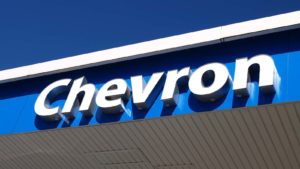In March, Chevron (NYSE:CVX) stock saw a sharp decline to near $50 per share, putting it in deeply oversold territory as panic-selling engulfed the markets.
Subsequently, fiscal stimulus and expansionary monetary policy triggered a sharp market rally. Production cut agreement between OPEC and non-OPEC members also boosted sentiments for the energy industry to some extent.
Backed by strong fundamentals and these developments, CVX stock surged by 70% and currently trades at more than $93 per share. For investors with a medium to long-term investment horizon, I still believe that fresh exposure can be considered to Chevron stock.
I do expect demand for oil is likely to remain weak through 2020 and potentially into the next year. However, production cuts can boost oil price in the coming quarters. Vopak, which is the world’s biggest independent storage company, has no remaining storage capacity. Be it an agreement or without it, OPEC and non-OPEC members have to cut production.
Similarly, oil production in the U.S. also plunged and is likely to remain depressed in the coming months.
Oil can trend higher in the coming quarters and that’s bullish for Chevron stock. Additionally, as economies reopen after the pandemic lock-down, demand for oil will increase on a relative basis.
Chevron Has a Robust Outlook
Considering the gloom in the energy industry, Chevron has ample positives when it reported first-quarter results for 2020.
For the quarter, the company reported cash flow from operations (excluding working capital) of $5.8 billion. This covered for $3.1 billion in cash capital expenditure and $2.4 billion in dividends.
While oil has declined significantly as compared to the average realized price for Q1 2020, I see the following positives:
- The company ended the quarter with a cash balance of $8.5 billion. In addition, CVX has $12 billion in commercial paper and $10 billion in undrawn credit facility. The company is well positioned to navigate several quarter of low energy prices with a total liquidity buffer of $30.5 billion.
- Chevron pays an annual dividend of $5.16 that currently represents a 5.7% yield. The company is committed to paying dividends with a strong liquidity position. Robust dividends that look sustainable through the crisis makes Chevron stock attractive.
- Chevron provided a stress scenario with Brent crude at $30 per barrel for the year and the next year. The company believes that even at $30, dividends and investments will sustain. Additionally, net debt ratio will be below 25%. Brent is already near $30 per barrel. If additional production cuts boost prices, the company is positioned to exit the crisis with a strong balance sheet.
- From a cost-cutting perspective, Chevron had earlier announced a capital expenditure of $20 billion for the year. This has already been reduced to $14 billion. In addition, operating cost is likely to decline by $1 billion as compared to the last year. Cost reductions are likely to continue in the coming quarters.
Overall, Chevron has a strong liquidity buffer and robust fundamentals. It’s not surprising that Chevron stock surged.
The Bottom Line on Chevron Stock
As of December, Chevron reported 11.4 billion barrels of proved reserves. Importantly, the reserve replacement ratio has been 101% for the last 10 years. Therefore, organic and inorganic reserve additions have been robust and provide production growth visibility.
It’s also important to note that Chevron has ample financial flexibility. With several companies struggling with leverage, asset sales are likely. Chevron has the opportunity to acquire attractive assets at a reasonable price.
At the same time, the company has been selling non-core assets. Since 2018, asset sale proceeds have been $6.5 billion. This adds to the financial flexibility.
Overall, Chevron stock remains attractive for long-term investors even after the recent rally. In my view, the worst might be over for oil prices.
For now, supply cuts will support oil and going into 2021, demand revival is likely.
Faisal Humayun is a senior research analyst with 12 years of industry experience in the field of credit research, equity research and financial modeling. Faisal has authored over 1,500 stock-specific articles with a focus on the technology, energy and commodities sector. As of this writing, he did not hold a position in any of the aforementioned securities.
Faisal Humayun is a senior research analyst with 12 years of industry experience in the field of credit research, equity research and financial modeling. Faisal has authored over 1,500 stock-specific articles with a focus on the technology, energy and commodities sector. As of this writing, he did not hold a position in any of the aforementioned securities.
Faisal Humayun is a senior research analyst with 12 years of industry experience in the field of credit research, equity research and financial modeling. Faisal has authored over 1,500 stock-specific articles with a focus on the technology, energy and commodities sector. As of this writing, he did not hold a position in any of the aforementioned securities.
Faisal Humayun is a senior research analyst with 12 years of industry experience in the field of credit research, equity research and financial modeling. Faisal has authored over 1,500 stock-specific articles with a focus on the technology, energy and commodities sector. As of this writing, he did not hold a position in any of the aforementioned securities.

